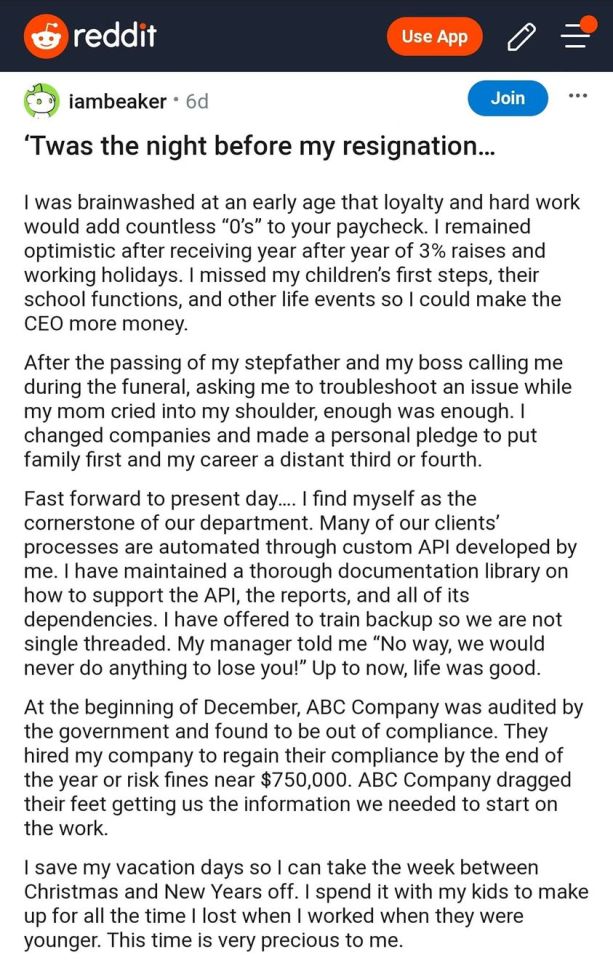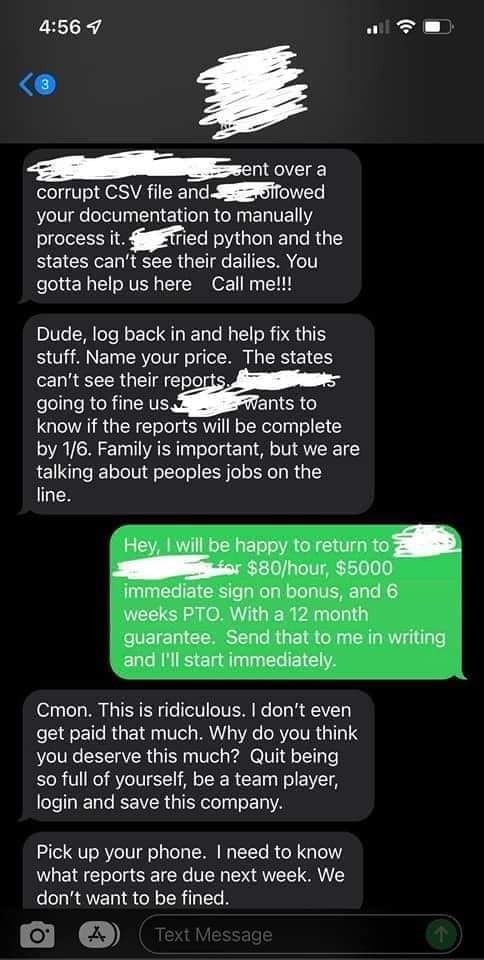#Document Drafting Automation
Explore tagged Tumblr posts
Text
Revolutionizing Workflow: Innovative Desktop Software for Document Generation
In today’s fast-paced business environment, efficiency, consistency, and accuracy are key to success. One of the ways organizations can streamline their operations is by adopting innovative desktop software for document generation. These powerful tools allow businesses to automate the creation of various documents, ranging from contracts and reports to invoices and proposals, all while reducing the chances of human error.
Automating Document Creation for Efficiency
The introduction of innovative desktop software for document generation has drastically simplified the process of creating business documents. Instead of manually inputting data into templates or starting from scratch, these software solutions enable users to generate accurate, pre-filled documents with just a few clicks. This automation not only saves time but also reduces the need for repetitive tasks, allowing businesses to focus on more strategic aspects of their operations.

For instance, many of these tools come equipped with customizable templates, where users can input key details and let the software handle the rest. This means that businesses no longer need to create documents manually, freeing up valuable resources. In industries where documents are crucial, such as legal, finance, or sales, the ability to quickly generate a variety of documents has become a key benefit.
Reducing Errors and Enhancing Accuracy
Manual document creation is prone to errors, especially when dealing with large amounts of data or repetitive tasks. Even small mistakes can result in costly consequences, whether it’s missing a client’s information in a contract or incorrectly listing an amount in a financial report. Innovative desktop software for document generation can eliminate these risks by automatically populating fields and ensuring consistent formatting.
Most of these software tools are equipped with data validation features, which help to catch common mistakes before they become problems. By reducing human intervention, the chances of errors are minimized, leading to a more accurate and reliable document generation process. For businesses dealing with sensitive information, the added layer of accuracy provided by these tools can be invaluable.
Collaboration and Sharing Capabilities
In a business environment, collaboration is key, and innovative desktop software for document generation often includes features that enhance teamwork. Many of these tools allow multiple users to collaborate on the same document, ensuring that team members can contribute and review content in real time. Whether it’s making edits, adding comments, or approving documents, these collaborative features help speed up the review process and improve communication across departments.
Conclusion
Innovative desktop software for document generation is transforming the way businesses approach document creation. By automating repetitive tasks, reducing errors, offering customization, and facilitating collaboration, these tools are providing companies with the means to improve their productivity and accuracy. As organizations continue to embrace digital solutions, adopting advanced document generation software can make a significant difference in streamlining operations and enhancing overall business efficiency. With the right tool, businesses can ensure they are always one step ahead in an increasingly competitive landscape.
#innovative desktop software for document generation#document automation software#desktop document creation tool#document generation solutions#customizable document software#automated document creation#document template software#pdf generation software#document drafting software#document management software#ultimate document management software#user friendly document generation software#estate document planning software
0 notes
Text
The highly controversial indiscriminate child sexual abuse regulation (so-called chat control) could still be endorsed by EU governments after all, as France could give up its previous veto. This is reported by Euractiv and confirmed by internal documents. France considers the new “upload moderation” proposal in principle as a viable option. According to the latest draft regulation dated 28 May (Council document 9093/24), which is presented as “upload moderation”, users of apps and services with chat functions are to be asked whether they accept the indiscriminate and error-prone scanning and possibly reporting of their privately shared images, photos and videos. Previously unknown images and videos are also to be scrutinised using “artificial intelligence” technology. If a user refuses the scanning, they would be blocked from sending or receiving images, photos, videos and links (Article 10). End-to-end encrypted services such as Whatsapp or Signal would have to implement the automated searches “prior to transmission” of a message (so-called client-side scanning, Article 10a). The initially proposed scanning of text messages for indications of grooming, which is hardly being used to date, is to be scrapped, as is the scanning of voice communication, which has never been done before. Probably as a concession to France, the chats of employees of security authorities and the military are also to be exempted from chat control.
During the last discussion on 24 May, the Council Legal Service made it clear that indiscriminate chat control scanning of non-suspects is still envisioned and remains a violation of fundamental rights. Nevertheless, most EU governments are determined to go ahead. EU governments plan to continue their discussions on June 4th. “The Belgian proposal means that the essence of the EU Commission’s extreme and unprecedented initial chat control proposal would be implemented unchanged,” warns MEP and most prominent opponent of chat control Patrick Breyer (Pirate Party). “Using messenger services purely for texting is not an option in the 21st century. And removing excesses that aren’t being used in practice anyway is a sham. Millions of private chats and private photos of innocent citizens are to be searched using unreliable technology and then leaked without the affected chat users being even remotely connected to child sexual abuse – this would destroy our digital privacy of correspondence. Our nude photos and family photos would end up with strangers in whose hands they do not belong and with whom they are not safe. Despite lip service being paid to encryption, client-side scanning would undermine previously secure end-to-end encryption in order to turn our smartphones into spies – this would destroy secure encryption. [...]
144 notes
·
View notes
Text
To be extremely blunt: Microsoft is asking its employees to draft their performance reviews based on the outputs of generative AI models — the same ones underpinning ChatGPT — that are prone to hallucination. Microsoft is also — as I learned from an internal document I’ve reviewed — instructing managers to use it to summarize "their direct report's Connects, Perspectives and other feedback collected throughout the fiscal year as a basis to draft Rewards/promotion justifications in the Manage Rewards Tool (MRI)," which in plain English means "use a generative AI to read performance reviews that may or may not be written by generative AI, with the potential for hallucinations at every single step."
I find this whole situation utterly disgusting. The Growth Mindset is a poorly-defined and unscientific concept that Microsoft has adopted as gospel, sold through Satya Nadella's book and reams of internal training material, and it's a disgraceful thing to build an entire company upon, let alone one as important as Microsoft. Yet to actively encourage the company-wide dilution of performance reviews — and by extension the lives of Microsoft employees — by introducing generative AI is reprehensible. It shows that, at its core, Microsoft doesn't actually want to evaluate people's performance, but see how well it can hit the buttons that make managers and the Senior Leadership Team feel good, a masturbatory and specious culture built by a man — Satya Nadella — that doesn't know a fucking thing about the work being done at his company. This is the inevitable future of large companies that have simply given up on managing their people, sacrificing their culture — and ultimately their businesses — to as much automation as is possible, to the point that the people themselves are judged based on the whims of managers that don't do the actual work and the machines that they've found to do what little is required of them. Google now claims that 25% of its code is written by AI, and I anticipate Microsoft isn't far behind.
12 notes
·
View notes
Text
Elon Musk’s so-called Department of Government Efficiency has deployed a proprietary chatbot called GSAi to 1,500 federal workers at the General Services Administration, WIRED has confirmed. The move to automate tasks previously done by humans comes as DOGE continues its purge of the federal workforce.
GSAi is meant to support “general” tasks, similar to commercial tools like ChatGPT or Anthropic’s Claude. It is tailored in a way that makes it safe for government use, a GSA worker tells WIRED. The DOGE team hopes to eventually use it to analyze contract and procurement data, WIRED previously reported.
“What is the larger strategy here? Is it giving everyone AI and then that legitimizes more layoffs?” asks a prominent AI expert who asked not to be named as they do not want to speak publicly on projects related to DOGE or the government. “That wouldn’t surprise me.”
In February, DOGE tested the chatbot in a pilot with 150 users within GSA. It hopes to eventually deploy the product across the entire agency, according to two sources familiar with the matter. The chatbot has been in development for several months, but new DOGE-affiliated agency leadership has greatly accelerated its deployment timeline, sources say.
Federal employees can now interact with GSAi on an interface similar to ChatGPT. The default model is Claude Haiku 3.5, but users can also choose to use Claude Sonnet 3.5 v2 and Meta LLaMa 3.2, depending on the task.
“How can I use the AI-powered chat?” reads an internal memo about the product. “The options are endless, and it will continue to improve as new information is added. You can: draft emails, create talking points, summarize text, write code.”
The memo also includes a warning: “Do not type or paste federal nonpublic information (such as work products, emails, photos, videos, audio, and conversations that are meant to be pre-decisional or internal to GSA) as well as personally identifiable information as inputs.” Another memo instructs people not to enter controlled unclassified information.
The memo instructs employees on how to write an effective prompt. Under a column titled “ineffective prompts,” one line reads: “show newsletter ideas.” The effective version of the prompt reads: “I’m planning a newsletter about sustainable architecture. Suggest 10 engaging topics related to eco-friendly architecture, renewable energy, and reducing carbon footprint.”
“It’s about as good as an intern,” says one employee who has used the product. “Generic and guessable answers.”
The Treasury and the Department of Health and Human Services have both recently considered using a GSA chatbot internally and in their outward-facing contact centers, according to documents viewed by WIRED. It is not known whether that chatbot would be GSAi. Elsewhere in the government, the United States Army is using a generative AI tool called CamoGPT to identify and remove references to diversity, equity, inclusion, and accessibility from training materials, WIRED previously reported.
In February, a project kicked off between GSA and the Department of Education to bring a chatbot product to DOE for support purposes, according to a source familiar with the initiative. The engineering effort was helmed by DOGE operative Ethan Shaotran. In internal messages obtained by WIRED, GSA engineers discussed creating a public “endpoint”—a specific point of access in their servers—that would allow DOE officials to query an early pre-pilot version of GSAI. One employee called the setup “janky” in a conversation with colleagues. The project was eventually scuttled, according to documents viewed by WIRED.
In a Thursday town hall meeting with staff, Thomas Shedd, a former Tesla engineer who now runs the Technology Transformation Services (TTS), announced that the GSA’s tech branch would shrink by 50 percent over the next few weeks after firing around 90 technologists last week. Shedd plans for the remaining staff to work on more public-facing projects like Login.gov and Cloud.gov, which provide a variety of web infrastructure for other agencies. All other non-statutorily required work will likely be cut, Shedd said.
“We will be a results-oriented and high-performance team,” Shedd said, according to meeting notes viewed by WIRED.
He’s been supportive of AI and automation in the government for quite some time: In early February, Shedd told staff that he planned to make AI a core part of the TTS agenda.
5 notes
·
View notes
Text
CaseFox Adds AI Document Generation & Analysis to Streamline Legal Drafting for Law Firms

CaseFox, a leading legal billing and case management software provider, has introduced powerful new AI capabilities to enhance how law firms and legal professionals handle document drafting. With the new Legal AI Document Generation and Analysis feature, users can effortlessly create essential legal documents—like NDAs—based on simple prompts, reducing time spent on repetitive tasks and ensuring consistency.
Beyond generation, CaseFox’s AI also analyzes legal documents to highlight key clauses, identify potential risks, and offer suggestions for improvement. This dual functionality enables lawyers to draft and review documents with greater speed and accuracy—without sacrificing quality.
These features are designed specifically for the legal industry, integrating seamlessly into CaseFox’s user-friendly platform. Whether you're a solo attorney or part of a large firm, the AI tools provide smart automation to boost productivity, improve compliance, and streamline workflow.
This update reflects CaseFox’s continued commitment to delivering cutting-edge, affordable, and easy-to-use legal tech. By embracing AI, CaseFox empowers legal professionals to focus more on strategy and client service—while the software handles the heavy lifting in legal drafting and analysis.
#legal ai#legal ai tools#legal ai software#legal ai drafting#nda generation#ai document generation#ai document analysis#legal ai document generation#contract generation#contract template generation#ai#ai tool#legal#law firm#lawyers#attorneys#legal office#law office
2 notes
·
View notes
Text
AITHEMIS: A New Way Of Enhancing Legal Practice in “AI” Way

Is AI a legal threat or a helpful tool? Is it replacing or altering the work of lawyers? You might be surprised by the response.
AI is now a quiet participant in the dance of existence. After initially being reluctant to take the initiative, it now easily guides us through its complexity. It helps us with things we used to think people could only do.
It can change the legal sector, including law firms, in-house attorneys, legal operations, and law schools.
AI is a potent instrument in the legal field that enhances rather than replaces human skill. It increases productivity and offers instant access to large databases, a document visualizer, and a case summarizer, which can help contract review in a few minutes.
But a human touch is still necessary for creativity, nuance, and comprehension of human settings. We should consider AI a friend rather than an adversary attempting to supplant humanity. Many of our problems can be solved by AI as a collaborator, which includes:
Review and Analysis of Documents Artificial intelligence (AI) technologies save time in case law research, contract analysis, and due diligence by quickly scanning hundreds of legal documents and finding relevant information.
Predictive analytics AI can predict legal outcomes by examining past cases. This allows lawyers to make better arguments and advise clients, enhancing strategy and decision- making.
Legal Studies AI tools that efficiently scan legal literature and rulings expedite research, and lawyers can focus. These technologies allow them to retrieve relevant content and concentrate on more crucial tasks quickly.
Contract Management AI-assisted contract management solutions reduce turnaround time and legal problems by accurately drafting, reviewing, and managing contracts while identifying risks and guaranteeing regulatory compliance.
Client Communication & Chatbots AI-driven chatbots respond to client questions and offer updates, enhancing client involvement and freeing legal professionals to focus on intricate case details. Therefore, AI is more likely to assist legal teams in keeping more work in-house than replacing positions. As a result, these teams can more carefully choose which tasks to outsource.
In other words, AI can free experts to concentrate on more creative and intellectually stimulating work — the kind of work that first attracted them to the legal field. One of the most significant effects of AI on the legal sector will probably be these procedures, which can benefit law firms or internal legal departments, as well as the clients and businesses they assist.
AI is having a truly remarkable and revolutionary impact on the legal industry. Law Firm AI Software and AI Case Management System tools are just two examples of how technology may modernize law businesses, promote growth, and enhance client services — it’s not just about automating work.
It is essential to have a reliable tool. The AI they employ must produce accurate and legally binding records, be based on trustworthy legal sources, and indicate where its data originates.
These are the few things to Take Into Account When Collaborating with a Trustworthy AI:
Does the AI platform for legal case summaries work well with your workflow, and is it compatible with your current legal applications?
Does it have the capability to meet legal demands, such as automated case management software?
Does the user interface guarantee that legal professionals can easily use it?
Does the supplier protect sensitive legal data by adhering to strict security and privacy standards?
Can AI be expanded to meet upcoming legal issues and technological advancements?
These factors must be considered when choosing AI for legal work. The quick adoption of AI to automate legal documents evidences a notable trend toward more precise and effective legal processes. In a time when time is of the essence, and legal difficulties are becoming more widespread, people who use and adapt to AI have a better chance of success.
The future of law is not about humans vs. AI but rather about how we can employ both to improve client service and build a more accessible and effective legal system.
With Aithemis, incorporating AI into law is not merely a trend but a revolution in law practice in the twenty-first century.
___________________________________
Follow Aithemis on these online channels.
Website: www.aithemis.ai
Blogs: www.aithemis.ai/blogs
Instagram: https://www.instagram.com/aithemis.ai
LinkedIn: https://www.linkedin.com/company/aithemis
2 notes
·
View notes
Text
Free AI Tools
Artificial Intelligence (AI) has revolutionized the way we work, learn, and create. With an ever-growing number of tools, it’s now easier than ever to integrate AI into your personal and professional life without spending a dime. Below, we’ll explore some of the best free AI tools across various categories, helping you boost productivity, enhance creativity, and automate mundane tasks.
Wanna know about free ai tools
1. Content Creation Tools
ChatGPT (OpenAI)
One of the most popular AI chatbots, ChatGPT, offers a free plan that allows users to generate ideas, write content, answer questions, and more. Its user-friendly interface makes it accessible for beginners and professionals alike.
Best For:
Writing articles, emails, and brainstorming ideas.
Limitations:
Free tier usage is capped; may require upgrading for heavy use.
Copy.ai
Copy.ai focuses on helping users craft engaging marketing copy, blog posts, and social media captions.
2. Image Generation Tools
DALL·EOpenAI’s DALL·E can generate stunning, AI-created artwork from text prompts. The free tier allows users to explore creative possibilities, from surreal art to photo-realistic images.
Craiyon (formerly DALL·E Mini)This free AI image generator is great for creating quick, fun illustrations. It’s entirely free but may not match the quality of professional tools.
3. Video Editing and Creation
Runway MLRunway ML offers free tools for video editing, including AI-based background removal, video enhancement, and even text-to-video capabilities.
Pictory.aiTurn scripts or blog posts into short, engaging videos with this free AI-powered tool. Pictory automates video creation, saving time for marketers and educators.
4. Productivity Tools
Notion AINotion's AI integration enhances the already powerful productivity app. It can help generate meeting notes, summarize documents, or draft content directly within your workspace.
Otter.aiOtter.ai is a fantastic tool for transcribing meetings, interviews, or lectures. It offers a free plan that covers up to 300 minutes of transcription monthly.
5. Coding and Data Analysis
GitHub Copilot (Free for Students)GitHub Copilot, powered by OpenAI, assists developers by suggesting code and speeding up development workflows. It’s free for students with GitHub’s education pack.
Google ColabGoogle’s free cloud-based platform for coding supports Python and is perfect for data science projects and machine learning experimentation.
6. Design and Presentation
Canva AICanva’s free tier includes AI-powered tools like Magic Resize and text-to-image generation, making it a top choice for creating professional presentations and graphics.
Beautiful.aiThis AI presentation tool helps users create visually appealing slides effortlessly, ideal for professionals preparing pitch decks or educational slides.
7. AI for Learning
Duolingo AIDuolingo now integrates AI to provide personalized feedback and adaptive lessons for language learners.
Khanmigo (from Khan Academy)This AI-powered tutor helps students with math problems and concepts in an interactive way. While still in limited rollout, it’s free for Khan Academy users.
Why Use Free AI Tools?
Free AI tools are perfect for testing the waters without financial commitments. They’re particularly valuable for:
Conclusion
AI tools are democratizing access to technology, allowing anyone to leverage advanced capabilities at no cost. Whether you’re a writer, designer, developer, or educator, there’s a free AI tool out there for you. Start experimenting today and unlock new possibilities!
4o
5 notes
·
View notes
Text
Building a Robust Data Governance Framework: Best Practices and Key Considerations

A good framework for data governance compliance assists organizations in ensuring data security. As a result, they can combat cybersecurity risks and fulfill regulatory requirements for responsible enterprise data operations. This post will focus on building a relevant, outcome-oriented data governance framework and strategy.
A comprehensive strategy will help protect an organization’s digital assets from different data breaches. Global brands want to avoid reputational damage and regulatory penalties by picking up governance initiatives. However, they seek reliable compliance approaches to maximize the value of data. That is why they want to know how to foster data etiquette for accuracy, timely access to insights, and relevance to business decisions.
Best Practices and Key Considerations for Building an Effective Data Governance Framework
1. Clearly Communicating Process Objectives and Data Ownership
Before a data governance framework is implemented, the objectives need to be clearly defined. What is the organization aiming to achieve by employing a data governance company? Some objectives may include the following.
- better quality of information,
- regulatory compliance,
- data-driven decision-making (DDDM).
These goals will determine the governance framework’s structure.
It also becomes very important to define data asset ownership. The data governance team, led by a data governance officer (DGO), must be held responsible for this. Those data professionals will develop data access and usage policies. They will also monitor data quality and address data-related issues across the entire organization.
2. Drafting Comprehensive Data Protection and Anti-Espionage Policies
A good data governance framework is based on well-articulated policies and standards. Those documents will guide data solutions and management practices, helping the firms and their suppliers. Such policies should define the most important compliance areas.
Considerations must include unbiased data classification and 24/7 security incident tracking. Moreover, privacy assurance assessments may be conducted. A broader data lifecycle management (DLM) vision can further streamline governance compliance efforts. Companies must also establish user permission standards. They will help allow access to data only if authorized personnel submit requests to their respective superiors. Similar access controls help prevent corporate espionage actors from entering IT systems and compromising sensitive business intelligence.
The policies developed should be flexible. After all, you will need to modify business governance frameworks. Otherwise, you cannot keep up with the regulators’ amendments to applicable laws.
3. Focus on Data Quality and Integrity
Ensuring data quality and integrity is very fundamental to data governance. Remember, inaccurate data leads to poor decisions. It inevitably results in misaligned strategies, causing inefficiencies in business activities. Therefore, data validation rules must be implemented. You want to encourage regular integrity audits based on those rules. Furthermore, adequate data cleansing practices will help ensure businesses’ dataset accuracy and reliability.
Consider data stewardship programs. It involves a competent individual or a team assuming responsibility for the quality of specific data assets.
4. Leverage Technology for Scalability and Automation
Data management can be enhanced by using modern technologies. Newer data governance platforms, artificial intelligence, and automation tools will aid you in improving governance compliance. These technologies will, therefore, make it easier to automate the tracking of data changes. Many tools also enforce governance policies. So, users can bypass the manual work of optimizing data protection measures based on the organization’s growth.
Conclusion
Building a strong data governance framework will demand definite objectives. Leaders will want to develop cross-functional collaborative environments to promote data ethics and integrity policies.
Accordingly, the best compliance assurance practices involve defining data ownership, ensuring data quality, and using novel technology. These measures would help organizations protect their data assets. Their superior compliance levels also make them attractive to more investors.
A robust data governance framework and compliance strategy does not just mitigate risk. Rather, it would deliver strategic success while respecting regulatory and consumer values concerning privacy.
2 notes
·
View notes
Text
Azuka Amucha Shares Time Management Strategies for Busy Lawyers

In the demanding world of law, time management is not just a skill—it's a necessity. Lawyers often juggle multiple cases, client meetings, court appearances, and a seemingly endless stream of paperwork. Without effective time management strategies, the risk of burnout is high. Azuka Amucha, an experienced attorney, understands these challenges and offers practical, actionable advice to help busy lawyers regain control over their time and improve their work-life balance.
1. Prioritize Tasks
One of the most effective ways to manage a heavy workload is to prioritize tasks. Amucha suggests starting each day by identifying the top three tasks that must be completed. These tasks should align with your most pressing deadlines or the highest-impact activities. By focusing on these key priorities, you can ensure that the most important work gets done, even if the day doesn’t go as planned. This approach also helps reduce the stress of trying to do everything at once, allowing you to concentrate on what truly matters.
2. Delegate Effectively
Delegation is another critical component of time management. Many lawyers feel the need to handle every detail themselves, but this can lead to inefficiency and burnout. Amucha advises lawyers to delegate administrative and routine tasks to paralegals or support staff. This not only frees up time for more complex legal work but also empowers your team and improves overall productivity. Effective delegation involves clear communication and trust in your team's abilities, ensuring that tasks are completed to a high standard.
3. Time Blocking
Time blocking is a strategy where you allocate specific time slots for different activities throughout the day. For example, you might set aside blocks of time for client calls, research, drafting documents, and court preparation. By organizing your day in this way, you minimize distractions and create a focused environment for each task. Amucha emphasizes the importance of sticking to these blocks as much as possible to avoid the inefficiencies that come with constant task-switching.
4. Leverage Technology
In today’s digital age, technology can be a lawyer’s best friend. Tools like case management software, digital calendars, and task management apps can streamline your workflow and help you stay on top of deadlines. Amucha encourages lawyers to embrace these tools to automate routine processes, organize tasks, and improve communication with clients and colleagues. Leveraging technology effectively can save hours each week, allowing you to focus on more strategic aspects of your practice.
5. Set Boundaries
Finally, setting boundaries is crucial for maintaining a healthy work-life balance. Lawyers often find themselves working long hours, which can lead to burnout. Amucha advises setting clear limits on after-hours work and making time for personal interests and family. This might mean turning off work emails after a certain time or dedicating weekends to rest and recharge. By setting these boundaries, you can ensure that your personal life doesn’t suffer at the expense of your professional responsibilities.
2 notes
·
View notes
Text
After going through this article on PCHomeWorld, I have learned so much about how ChatGPT applications on iPhones can improve efficiency toward conducting businesses. Here are a few key points:
Improved Communication: The most tangible benefit that I derived was an increase in communication efficiency. The saving of my time was by drafting all the emails and responses to customer queries via ChatGPT and, most importantly, making all communication uniformly professional. This has been particularly useful for handling routine inquiries and follow-ups, allowing me to focus on more strategic tasks.
Enhanced Collaboration: ChatGPT applications have been utilized to ensure better collaboration within the team. With such apps, scheduling, setting reminders, and arranging meetings have become very easy, and it allows me to become better coordinated with my team. There's in-built AI for reminders and notifications to ensure every person is in the loop and reduce the likelihood of missing a deadline or something important.
24/7 Customer Service: The superb applications of ChatGPT have such features built in, meaning customer service is never unavailable. With the help of these applications, I can instantly respond to client queries at whichever time of the day. This boosts customer satisfaction and makes the client more loyal, as they appreciate such timely and prompt responses.
Efficient Content Creation: ChatGPT apps make it super easy to create content for anything, be it a blog post, social media update, or any other marketing document. This makes it so easy for me to still have a good online presence without putting in too much time for the writing and editing process. A user can create content in a consistent and energetic way, therefore making the deliverables come through. The PCHomeWorld article further elaborates on these benefits by giving tangible examples and use case scenarios. For example, the article cites ChatGPT apps intended for enterprise use and concrete examples of how one would implement them in an organization. It also goes to the extent of dealing with the promising future of AI-based improvements in increased business efficiency.
Overall, it has been as transformational as having ChatGPT apps bundled into what I like to call my work ecosystem. Automating repetitive work with sharp communication, this app lets me ruminate on the strategic growth areas rather than anything else for my business.
2 notes
·
View notes
Photo
Stealing/boosting id from consistantly-changing
[Image descriptions in order: two screenshots of a Reddit post by u/iambeaker titled "'Twas the night before my resignation…" The post reads "I was brainwashed at an early age that loyalty and hard work would add countless "0's" to your paycheck. I remained optimistic after receiving year after year of 3% raises and working holidays. I missed my children's first steps, their school functions, and other life events so I could make the CEO more money.
After the passing of my stepfather and my boss calling me during the funeral, asking me to troubleshoot an issue while my mom cried into my shoulder, enough was enough. I changed companies and made a personal pledge to put family first and my career a distant third or fourth.
Fast forward to present day…. I find myself as the cornerstone of our department. Many of our clients' processes are automated through custom API developed by me. I have maintained a thorough documentation library on how to support the API, the reports, and all of its dependencies. I have offered to train backup so we are not single threaded. My manager told me "No way, we would never do anything to lose you!" Up to now, life was good.
At the beginning of December, ABC Company was audited by the government and found to be out of compliance. They hired my company to regain their compliance by the end of the year or risk fines near $750,000. ABC Company dragged their feet getting us the information we needed to start on the work.
I save my vacation days so I can take the week between Christmas and New Years off. I spend it with my kids to make up for all the time I lost when I worked when they were younger. This time is very precious to me.]
["Last week and this week, I have been notifying the project manager and my manager about my time off. I let them know I would need ABC Company's information soon so I can start on it. I offered to work extra hours to ensure my piece would be finished prior to Christmas Eve.
On Tuesday, my manager calls me and tells me ABC Company finally sent the data over I requested over two weeks ago. He looked beaten because he knew what was about to happen. I told him who should I walk through the project with because I'm off after Christmas. My manager says, "I'm sorry. But I have to ask you to work. I declined your time next week."
I asked, "What happens to my vacation time?" My boss says, "I'm sorry. You know the rules. Use it or lose it. I fought for you but HR wouldn't budge."
I drafted my resignation letter after the call, set it to delay delivery on Monday at 8am, and closed up shop.
ABC Company will pay $700,00 because nobody knows how to program that system since there is no back up. Our other clients will be expecting their monthly, quarterly, and annual reports within the first week of January. No one knows how to do this. We had six projects in progress involving extensive API and reporting, now those projects are dead in the water. Seven clients prepaid for API and automation upgrades in 2022 Q1. I don't know what will happen to those.
Please remember. Family first. You never get that time back."]
[Several screenshots of a text conversation between OP and their boss. It goes:
Boss: Hope you have a great Christmas
Boss: [OP] please call me as soon as you can.
Boss: I received your email. I understand that you are upset but resigning is not the best choice in this circumstance.
Boss: [OP], I have been your friend for five years. I'm asking you as a friend, not a manager to reconsider and call me. Let's talk about this
Boss: Hey, you made your point. You can have today off if you call me and let me know when we can expect you tomorrow. But you need to call me.
Boss: This is ridiculous. Do you know what your actions are going to do to the company? To me? You made your point. Just call me and we will figure out your vacation. But we need]
[Boss: This is ridiculous. Do you know what your actions are going to do to the company? To me? You made your point. Just call me and we will figure out your vacation. But we need [task] done by Friday.
Boss: Why won't you answer your phone? Your wife won't answer hers either. HR needs to talk to you.
Boss: I got out of a meeting with [name]. If we don't get this done for [client] we get penalized and that $ comes from bonus and pay increases. I want you to know that. If you don't finish that, nobody gets a bonus or a pay increase this year. This will be common knowledge
Boss: [OP], I've been talking to [name] We assume you resigned because you were going to lose your vacation. Here's the deal… if you call me by 3, we will rollover your vacation to 2022, but we still need you to work T-F. We need [task] done before 12/31. Call me before 3]
[Boss: [name] sent over a Corrupt CSV file and [name] followed your documentation to manually process it. [Name] tried python and the states can't see their dailies. You gotta help us here Call me!!!
Boss: Dude, log back in and help fix this stuff. Name your price. The states can't see their reports. [Company's] going to fine us [name] wants to know if the reports will be complete by 1/6. Family is important, but we are talking about peoples jobs on the line.
OP: Hey, I will be happy to return to [company] for $80/hour, $5000 immediate sign on bonus, and 6 weeks PTO. With a 12 month guarantee. Send that to me in writing and I'll start immediately.
Boss: Cmon. This is ridiculous. I don't even get paid that much. Why do you think you deserve this much? Quit being so full of yourself, be a team player, login and save this company.
Boss: Pick up your phone. I need to know what reports are due next week. We don't want to be fined.]
[Boss: Not even a counteroffer? Every hour the dailies are down, that's $1000 per STATE. [Name] does not know how to fix it. I don't know how much clearer I need to be. Log back in, fix his mistake, get [task] done, be a team player. We are family too you know.
OP: Please stop calling my dad. He has nothing to do with this. You can call me all you want but don't call my emergency contacts. I resigned, I didn't die.
Boss: We had to make sure you were ok.
Boss: Congrats [OP]. You cost the firm $19k. You taught us a lesson. Now pick up the phone and we talk about a reasonable offer. But you need to fix this states daily thing right now. That is your priority
Boss: Pick up the phone HR wants to conduct their exit interview]
[Boss: [OP], here are your priorities
Fix state dailies
Complete [task]
Provide [name] list of 1/6 reports
Train [name] being your back up
Boss: How much time will it take to fix the dailies? I need to tell [name]
OP: What does this mean? To be 100% clear, I resigned today. I don't have priorities or projects. I am no longer an employee. If you would like me to return, I gave you my offer
Boss: There was a time when a two week notice would before you resigned. Maybe you should be a better businessman and give us two weeks? [OP], we all make sacrifices. You have to sacrifice one week of vacation so we can fix some stuff around this department. Next year, maybe you won't ask off for this week until closer to December and you know what the workload is. You gambled and you lose. Just laugh it off and log on, let's get these states fixed. Let's fix [company]. Let's get this department fixed
Boss: Pick up your phone. It is [name] and me We need to know what it's going to take to fix the state dailies. $19k/hour is going to murder us
Boss: [OP] answer your phone
Boss: ANSWER YOUR PHONE!!!
OP: For $10,000, I'll fix your state daily file and train the team on how to run it so this doesn't happen again. Nobody is familiar with Python or understands Alteryx or SSIS. I can train them all using my existing documentation. The answers are all there.
OP: I can fix the state daily file tonight to avoid further fines and train the team the rest of the week. But I will NOT do any work on [project] or provide any information about recurring reports.
Boss: Is that some kind of joke? Your documentation does not have the answer. We've been through it [censored] laughing at $10k. You already cost us $32k today, you want to squeeze another $10k. You got greedy over Christmas]
[Boss: $10k
Fix daily files
Train the team
Do the [project]
Run the recurring reports for January
Deal?
Then we are done.
OP: That is a generous offer. But I'm firm on my offers. But I'm telling you, you don't need me. The answer is in the documentation.
Boss: Then where is it? If you were a true person of your word, you would tell us and save this company. Save your coworkers. Save their paychecks and their bonuses.]
[A gif of Homer Simpson driving. He turns behind him to shout angrily, then the camera changes to a wide shot where he drives over a short wooden bridge, throwing a lighter onto it and lighting it on fire.]
[An update from the OP, which says, "Present Day:
Throughout the day, the manager and CEO send a barrage of texts and phone calls.
One of my coworkers finds the documentation and fixes the reports. Later in the afternoon, he is served corrective action because he was accountable for processing the corrupted file and did not find the documentation faster. He tells me the manager, HR, and the CEO spent all night finding evidence to support the corrective action. I tell him to get his resume up to date. Total down time: 16 hours
Around 3pm, I get a phone call from a new number. It was the client's business manager (the liaison between the former company and the client). I explained to her the delay of getting data until Christmas (despite multiple requests), the loss of a full week of PTO, the text messages/phone calls, and my offer to come back to help her company reach compliance.]
["The business manager told me a different story. The manager and CEO called her earlier to inform her I quit and I am "stalling the project as ransom" in order to obtain more money. I explained how one could skew this view, but I am not actively seeking to return. After observing how the company treats their employees and after being treated post resignation, I have no interest in returning to the company.]
["The business manager asks me what terms (rate, signing bonus, etc.) what I was seeking to return to my former company. She tells me she will call back in an hour and not respond to any more texts from the manager or CEO.
CEO Text: Did the business manager call you? Did she give you a piece of her mind?
Manager Text: I bet the business manager is going to make you personally pay for that fine!
The business manager calls me back on a conference call and asks, "What do you need to finish this project? Software, data, tools, etc.?" I give her a list of everything I need. I answer other questions related to the project.
She says, "Here's the plan. We are going to offer you a contract to finish this API for us by the end of the year for double the hourly rate you asked. If you can finish by 12/31, we will give you the signing bonus. After the New Year, we will see where we are staffing wise and maybe, we can find you a spot, but there is no guarantee, especially if you do not the project. Is that a deal?"]
["I agree to the terms. I inform to put terms in writing and I can start as soon as IT gives me a virtual machine. The business manager says, "No problem, legal checked the contract and there is a clause stating if your former company is unable to perform a function which they agreed to do, we are able to outsource it to a third party and charge the company for it. I just need them to state they are unable to perform the API function, and we will bill them for your time."
TLDR; The client is giving me a contract and billing my former company double my asking rate because the former company is unable to successfully execute a function by the deadline they agreed to in a contract."]










247K notes
·
View notes
Text
Optimizing Legal Workflows with PDQ Docs: Document Automation Software for Law Firms
In the fast-paced legal world, law firms need to maintain efficiency and accuracy while managing large volumes of documents. Legal professionals are often faced with repetitive tasks that consume valuable time, such as drafting contracts, creating client forms, and generating legal documents. This is where document automation software for law firms, like PDQ Docs, comes into play. By automating these tasks, law firms can save time, reduce human error, and improve overall workflow efficiency.
How PDQ Docs Enhances Legal Workflows
One of the primary ways PDQ Docs enhances legal workflows is by automating the creation of legal documents. With PDQ Docs, law firms can create custom templates for various types of documents, such as contracts, wills, agreements, and more. The software then automatically populates these templates with client-specific information, eliminating the need for repetitive data entry.
The Benefits of PDQ Docs for Law Firms
The use of document automation software for law firms offers numerous advantages, and PDQ Docs is no exception. One of the main benefits is the significant time savings. By automating repetitive tasks like document creation, law firms can reduce the amount of time spent on administrative work. This allows attorneys and legal staff to focus more on higher-value tasks, such as client consultations, strategy development, and case analysis.

Another key benefit is improved accuracy. Human error is inevitable, especially when handling a high volume of documents. PDQ Docs minimizes errors by ensuring that all documents are consistent and follow the firm’s specific templates and guidelines. This not only improves the quality of work but also reduces the risk of costly mistakes.
Moreover, PDQ Docs helps law firms improve client service. Since the software speeds up document creation and retrieval, law firms can respond to clients more quickly and efficiently. Clients benefit from faster turnaround times, and law firms enhance their reputation by providing timely, professional services.
Why PDQ Docs is the Ideal Document Automation Software for Law Firms
When choosing document automation software for law firms, PDQ Docs stands out for its user-friendly interface and powerful features. The software is intuitive, making it easy for law firm staff to learn and implement quickly. PDQ Docs is also highly customizable, allowing law firms to tailor the software to meet their unique needs and processes.
Conclusion
In the competitive and fast-paced world of law, law firms need to adopt solutions that enhance efficiency, accuracy, and client service. Document automation software for law firms, such as PDQ Docs, offers a powerful tool to streamline document creation and management, reduce administrative overhead, and improve the overall quality of legal work. With its user-friendly design, customizable templates, and strong security features, PDQ Docs is the ideal solution for any law firm looking to optimize their document management processes. By integrating PDQ Docs into your practice, you can boost productivity, minimize errors, and deliver superior service to your clients.
#document automation software for law firms#document generation software for law firms#ultimate document management software#document automation software#law firm automation tools#legal workflow automation#document generation software#legal document management#contract automation for law firms#document automation solutions#legal technology for law firms#law firm document templates#legal document drafting software#legal practice management software
0 notes
Text
Writer’s Contract Management Software – Control, Automate & Track Every Agreement

Writer’s Contract Management Software helps businesses create, track, store, and manage contracts across their entire lifecycle. From automated drafting and approval workflows to expiry alerts and audit trails, this platform ensures compliance, improves negotiation timelines, and reduces legal risks. Ideal for legal, procurement, HR, and finance teams, it streamlines collaboration and enhances visibility across departments. Contract Management, Legal Automation, Writer Information, Contract Lifecycle, Document Approvals, Compliance Tools, E-signature Integration, Contract Repository, Risk Mitigation, Contract Renewal Alerts, Procurement Workflow
0 notes
Text
Practice AI™: Revolutionizing Legal Operations with AI‑Driven Solutions

Introduction
In a transformative era for law firms, Hamid Kohan | Practice AI™ is leading the charge by enabling firms to automate legal operations without sacrificing quality or compliance. His platform is redefining legal efficiency, streamlining workflows from client intake to document summarization.
The Visionary Leader Behind Practice AI™
Silicon Valley Roots and Legal Tech Evolution
Hamid Kohan | Practice AI™ brings a rare blend of Silicon Valley tech leadership and deep legal industry insight. With early roles at Grid Systems, SUN Microsystems, and Emblaze, Kohan pivoted into legal tech in 2016 by founding Legal Soft (now merged into Practice AI™) .
Industry Recognition & Influential Memberships
Last month, Hamid Kohan | Practice AI™ earned an invitation to the Forbes Business Council — an honor that recognizes his impact in scaling over 1,100 law firms with AI-powered automation.
Practice AI™ in Action
Intelligent Intake & Client Engagement
One of the platform’s standout features, introduced by Hamid Kohan | Practice AI™, is AI-driven client intake. Seamless calls, texts, and email follow-ups coupled with real-time document capture boost engagement and make intake far more efficient.
Automated Document Analysis & Demand Letters
The Demands AI and Doc Summary tools, another innovation by Hamid Kohan | Practice AI™, can draft demand letters and summarize complex medical–legal documents in under five minutes. This transforms hours of tedious work into instantaneous outputs while maintaining precision.
Centralizing Legal Operations
Streamlined Workflows with CRM & Virtual Assistance
Hamid Kohan | Practice AI™ envisions a centralized legal tech environment. By integrating AI with CRMs and virtual staffing, administrative tasks — from calendaring to data management — are fully automated, enabling lawyers to focus on strategy.
Guidance for Choosing Legal AI
Thought Leadership on Smart Adoption
A recent GlobeNewswire release emphasized Hamid Kohan | Practice AI™’s advice: “Technology alone isn’t enough.” Law firms should vet providers for legal expertise, support, compliance, and customization.
Measurable Impact Over Hype
By championing pilot rollouts, KPIs like time saved and case volume increase, Hamid Kohan | Practice AI™ frames AI adoption as a performance enhancement — not a flashy trend.
Real-World Benefits
Avoiding Common AI Pitfalls
Hamid Kohan | Practice AI™ warns that without a plan and support, AI implementation can hurt more than help — wasting resources, disrupting workflows, and risking compliance.
Early Gains & Competitive Edge
Firms using Practice AI™ report faster case turnarounds, higher accuracy in documents, enhanced client responses, and the ability to scale services without additional staff costs — as confirmed in pilot cases.
Ethics, Compliance & Security
HIPAA & SOC2 Adherence
Security is central to Hamid Kohan | Practice AI™’s value proposition. The platform is HIPAA compliant, SOC 2-certified, and designed to secure sensitive legal and medical data.
Leadership Through Education
Sharing Knowledge at Scale
A frequent speaker on platforms like the PILMMA podcast, Hamid Kohan | Practice AI™ discusses document automation, AI ethics in law, and how to structure tech stacks for scalability.
The Future of Legal Practice
Expanding AI Integration
Looking ahead, Hamid Kohan | Practice AI™ foresees broader use of AI in areas like predictive case analytics, intelligent intake systems, and deeper CRM automation to elevate performance.
Empowering Law Firms at Every Scale
Whether a solo practitioner or large firm, Hamid Kohan | Practice AI™ believes structured, tailored AI can close performance gaps, enhance client service, and drive profitable expansion.
Conclusion
Hamid Kohan | Practice AI™ is transforming legal operations with practical, compliant AI solutions deeply grounded in legal workflows. His mandate — “AI should be helpful, not hype” — advocates thoughtful adoption, measurable impact, and ongoing partnership. Guided by his leadership, law firms can not only adapt to tech disruption — they can thrive by making AI the backbone of efficiency, accuracy, and growth.
0 notes
Text
How to Build a Knowledge Hub for Your Team with AI and Client Access Tools

Scattered files and inconsistent communication cause delays, confusion, and duplicated effort. A knowledge hub helps address these problems by providing your team with a single location to find what they need.
Begin by identifying the documents, workflows, and procedures that your team relies on most frequently.
Gather all materials that support project delivery, onboarding, communication, and task handoffs. This includes FAQs, training materials, brand guidelines, and reporting templates. Organize by role or function so people aren’t searching through cluttered folders.
Consider how your team communicates. If people constantly ask the same questions in meetings or chats, that information should be stored in your hub. Focus on what supports action: Details that reduce back-and-forth questions and clarify next steps without adding more meetings.
Use Smart Tools to Keep the Hub Active and Useful
A knowledge hub won’t work if it becomes outdated or too passive. AI can help by automating updates, summarizing feedback, and offering quick responses to common questions. Teams stay aligned when content is fresh, searchable, and readily available, eliminating the need for constant reminders.
Set up your AI chatbot to respond to internal questions about projects, tools, and procedures. The goal is not to replace human support but to reduce unnecessary repetition.
Follow best practices for using AI chatbot systems by keeping answers simple, structured, and based on accurate inputs. Use tags and categories that mirror how your team already talks and works.
Make it easy for your team to update the hub. If changes require technical steps or special access, the system won’t grow with your needs. Use feedback from your team to improve entries, address gaps, and refine the organization of information.
Give Clients a Clear Window Into Their Experience
Clients expect transparency, access, and clarity. Creating a customer portal gives them a way to track progress, view deliverables, and communicate without waiting for email replies. The fewer delays they encounter, the stronger their trust becomes.
Start simple when setting up your portal. Provide access to status updates, timelines, important documents, and meeting notes. Clients don’t need every detail; they want clarity about where things stand and what comes next. Break your information into sections that follow their journey from onboarding to delivery.
Make your portal match your workflows. If you share feedback rounds, milestones, or content drafts, those should be easy to find. Use tools that allow two-way updates so your team sees what the client sees.
Build Processes That Improve With Each Interaction
A good knowledge hub improves every time it is used. Track what people search for, which questions repeat, and where misunderstandings happen. Then use that data to fill in missing pieces and strengthen your process from within.
Encourage your team to share lessons learned from clients, bottlenecks, and internal changes. Add those insights to your system so others can benefit from them later. You’re essentially creating a functioning brain that evolves with your business.
Integrate best practices for using AI chatbot tools into your system updates. Let your chatbot highlight missing answers, flag outdated entries, or suggest additional resources to improve your content.
Keep Everything Consistent Across Channels and Roles
Consistency builds confidence. A strong knowledge hub provides every team member with access to the same information, regardless of their role or location. Create templates, style guides, and onboarding flows that make your brand experience uniform from top to bottom.
Train your team to use the hub as their first step. Make it the default before asking a colleague or repeating a request. Over time, this habit becomes an integral part of your team's culture.
The same principle applies to client experience. When creating a customer portal, ensure that the experience aligns with your internal processes. If deadlines shift or files are updated, both parties should be notified.
Conclusion: Build a Hub That Works While You Work
A knowledge hub should support your team’s momentum. With smart setup, consistent input, and client-friendly tools, you build a system that reduces confusion and improves delivery across the board.
Following best practices for using AI chatbot features helps your team get answers without delay. Creating a customer portal adds a layer of trust that keeps your clients engaged and informed.
0 notes
Text
Real Estate Revolution: 7 Powerful Ways AI Transforms the Industry!

From Guesswork to Intelligence: A Realtor’s Journey with AI in Real Estate
It was a humid Monday morning when Meera, a 32-year-old real estate agent in Kochi, stared at her spreadsheet of unsold properties. Despite her relentless effort — calls, site visits, newspaper listings — something felt outdated. Clients wanted more than square footage and location; they wanted personalization, insights, speed.
That’s when Meera decided to give Artificial Intelligence a shot.
The First Spark: Smarter Listings Her journey began with AI-enabled property portals. Instead of static listings, these platforms learned about the buyer. One client who initially searched for 2BHK apartments near schools was also shown gated villas near tech parks — because the AI recognized his browsing habits and income patterns. He booked a site visit the same day.
For the first time, Meera saw how AI could understand buyers better than they understood themselves — a game-changer in real estate.
Numbers That Spoke Volumes A week later, Meera used an AI-based pricing tool. She uploaded photos, property age, area, nearby amenities — and out came an estimated market value, rental potential, and price flexibility range. She was stunned.
Earlier, price negotiation felt like a gamble. Now, with machine learning models tracking market behavior, seasonality, and neighborhood demand, she could speak numbers with confidence. The AI wasn’t just helping her sell — it was helping her sell smart.
A Tireless Assistant Her next discovery was an AI-powered chatbot on her agency’s website. This digital assistant could answer 80% of the queries — location, EMI estimates, floor plans, virtual tours — while Meera focused on high-value clients.
When she closed her first deal fully online through that assistant, she didn’t feel replaced — she felt relieved.
It was clear: in the modern world of real estate, AI wasn’t about automation — it was about augmentation.
Beyond Sales: Helping Builders and Developers Meera soon found herself working with a local builder. “Where should we build next?” he asked. She turned to AI’s predictive analytics.
The software processed traffic trends, land prices, school zones, office expansion zones, and even social media buzz. Within days, it suggested three micro-locations ripe for growth.
For Meera, this wasn’t just a sale. It was real estate strategy at a whole new level.
Paperwork? Streamlined. Another problem: paperwork. KYC, lease drafts, buyer IDs — all of it piled up. AI document verification tools began scanning, flagging inconsistencies, and storing them securely. No more late-night proofreading or legal hiccups.
In real estate, where legal missteps can mean massive losses, this felt like having a lawyer and a filing clerk rolled into one.
Trust Built on AI What about fraud? Meera had lost a client two months back to a fake listing on a rival site. Now, AI fraud detection scanned listings for duplicate images, inconsistent metadata, and red flags in seller profiles. It brought a new sense of security — for both agents and clients.
In a field like real estate, trust is everything. And AI helped her build it.
The Bigger Picture Soon, Meera was onboarding NRI clients — people who couldn’t visit properties but wanted real estate investments in Kerala. AI tools helped her translate trends, localize insights, and provide virtual walkthroughs. Geography no longer limited her sales.
For deeper insight into how AI is transforming the future, click the link below:
Conclusion: A New Era Begins Today, Meera doesn’t chase leads with flyers or wait endlessly for callbacks. She lets Teemify’s intelligent agent handle the patterns — automating follow-ups, sorting qualified leads, and even scheduling property walkthroughs — while she focuses on building real relationships. Her revenue is up. Her hours are better. And her clients? More satisfied than ever.
AI didn’t change what she did in real estate. Teemify changed how she did it — intelligently, efficiently, and effortlessly.
#realestateinnovation#aiinrealestate#proptech#artificialintelligence#futureofrealestate#intelligentrealestate#realestatetech#smartrealestate#realestatedigitaltransformation
1 note
·
View note